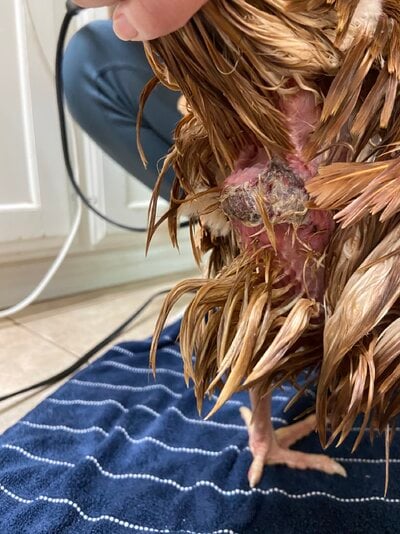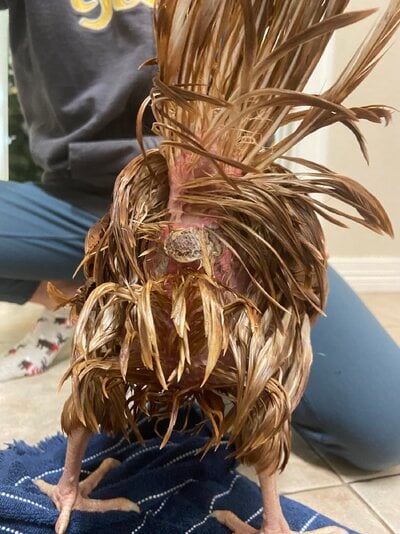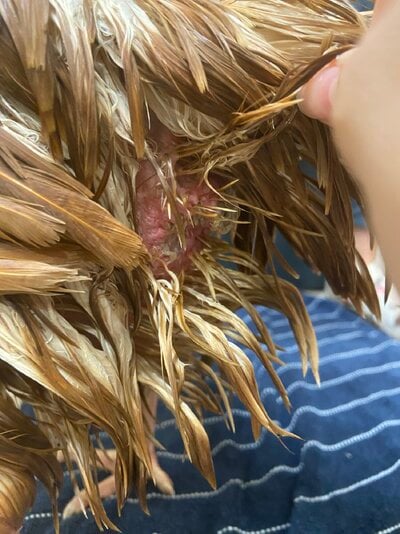Certified Chicken Lover
Songster
- Oct 15, 2023
- 522
- 1,742
- 221
So, this is about my June again y'all, and if you haven't read about her she is my three year old, blind, golden comet. So a little background first she hasn't been eating a lot recently, she hasn't laid an egg in months, her diet is purina layer crumble, and because she hasn't been eating a lot we have been giving her some yogurt the last couple days. So yesterday I saw her bum was getting a little gross and I decided to give her a bath but then I got busy and forgot about it until this afternoon I went to check on her, and after picking her up I noticed that her bum was really dirty and a little bloody so I inspected further and... right over her vent was TEEMING with maggots (I totally freaked out)! We just finished giving her a bath and all the maggots' are gone except one that looked like it crawled into her bum (if it actually did is that bad??) and this is what it looks like now. Also can the maggot survive inside of her?? I'm assuming that the gray stuff is roughting skin?? After we soaped all the feathers around it I dosed it in hyderian peroxide and sprayed it with vetericyn. What is the cause of this and how do I help it heal??







